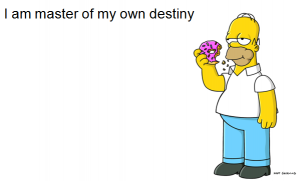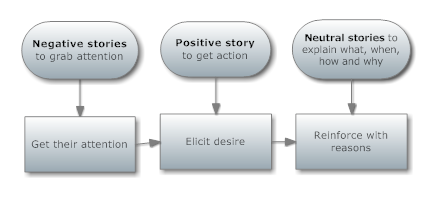Content marketing and the people who write marketing messages must understand how consumers’ brains work if they want to engage and create trust and loyalty. The problem lies in assuming people are in charge of their own choices…
 Everybody thinks they are in control of their behaviors and decisions. We think we are rational, logical, and smart human beings. But we may not be so smart if we don’t recognize our own and others’ irrationality.
Everybody thinks they are in control of their behaviors and decisions. We think we are rational, logical, and smart human beings. But we may not be so smart if we don’t recognize our own and others’ irrationality.
Our behavior and decision-making is affected, 95% of the time, by the unconscious processing in the mid and old brains. 95% of our decision making and buying and Web actions are heavily influenced by unconscious processing.
85% of the time our brains are on autopilot. But marketers continue to write messages as if people were paying attention.
Market research: in 2005 corporations spent more than $7.3 billion in US alone. In 2007, $12 billion. That doesn’t include marketing, advertising, etc. which carries an additional annual $117 billion tag. Most of it is spent in the wrong places and fails.
Companies and brands are gathering the wrong information, because consumer surveys and focus groups can only report back what they consciously experience …and it’s falsified by biases and flaws. The only true market research comes from monitoring brains of consumers as they react to messages, through neuromarketing.
8 out of 10 new product launches fail. Could it be that we’ve misunderstood how to capture attention, emotions and be memorable to consumers? Could it be we assume people are conscious and rational?
Health warnings on cigarette labels actually trigger smoking behaviors, they don’t deter any smoking at all, quite the contrary. How do we know? Not because smokers report they ignore the warnings. They all say they read them and believe them and want to quit smoking. But their brain scans show they actually want a cigarette even more. (Buyology, Martin Lindstrom) Read More→












